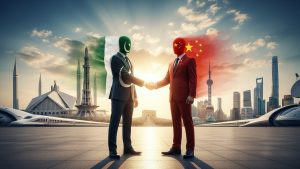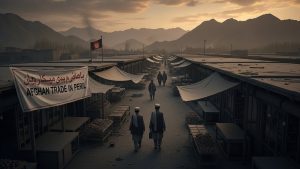“Some even believe we (the Rockefeller family) are part of a secret cabal working against the best interests of the United States, characterizing my family and me as ‘internationalists’ and of conspiring with others around the world to build a more integrated global political and economic structure – one world, if you will. If that’s the charge, I stand guilty, and I am proud of it.”— David Rockefeller (1915-2017)
The Rockefeller dynasty came to the fore when John D. Rockefeller (1839-1937), also known as John D. Rockefeller Sr., established his monopoly over oil business in the United States. He was the second child and the first son of William Avery Rockefeller (1810-1906) and Eliza Davisson (1813-1889). The couple had six children. William Rockefeller, also known as “Devil Bill”, has been described as a “notorious fraudster.” When he married Eliza, who came with a $500 dowry, he brought her a beautiful helper, a poor young woman named Nancy Brown. Devil Bill had children alternately from Eiza and Nancy until Nancy grew unhappy and was sent back to her family.
Devil Bill was a charlatan, who, in his early twenties, first began posing as a deaf and dumb seller of trinkets. Subsequently he also assumed another identity – he posed as a doctor offering herbal remedies to unsuspecting villagers. Devil Bill assumed the name of Dr. William Levingston. Under this alias he married a young woman named Margaret Allen, while still married to Eliza! He was mostly away from home. In his absence Eliza and the kids had a hard time making ends meet. Whenever he returned he was loaded with money which he spent generously on the family and narrated captivating tales to his children.
One extremely important lesson that Devil Bill imparted to his sons was to not trust anybody. He once told a neighbor: “I trade with my boys and I skin ‘em and I just beat ‘em every time I can. I want to make ‘em sharp.” He played cruel games with his son John when John was still very young. Such rough treatment taught John D. to be tough and ruthless. From his father John D. also learned the art of meticulous book keeping. John D. learned from his father that in order to succeed any means was acceptable. Also John D. did not take alcohol – he was a teetotaler. Not only did his father William not drink, the father of his father and the mother of his mother never took alcohol. The family lived initially in upstate New York. Industrious even as a boy, the future oil magnate earned money by raising turkeys, selling candy and doing jobs for neighbors. In 1853, the Rockefeller family moved to the Cleveland, Ohio, area, where John attended high school before briefly studied bookkeeping ‘at a commercial college.
John D. Rockefeller came under the influence of Baptist church and was deeply influenced by its teachings. He felt that his profit in business and his success came from God, and therefore, throughout his life, he donated to churches and to charities. A Baptist preacher once urged him to make as much money as he could and then donate as much as he could. John D. recalled that it was at that moment that the plan of his life was formed. In 1855, when he was just 16 years old, he found work as an office clerk at a Cleveland commission firm that bought, sold and shipped grain, coal and other commodities. He was industrious and serious minded and that earned him the respect of senior businessmen. Even as a teenager he was addressed as Mr. Rockefeller! In 1859, Rockefeller and a partner established their own commission firm.
That same year, in 1859, America’s first oil well was drilled in Titusville, Pennsylvania. The reliable Deanna Spingola has stated that “In 1861 John D. Rockefeller and Henry M. Flagler set up a small oil refinery in Cleveland . . .” At the time the civil war was going on and oil was much in demand. As taught by his father, Devil Bill, John D. did not refrain from using all kinds of means to gain control of the oil business in the U.S. Oil, in the form of kerosene oil, was then fast becoming a household item. According to history.com: “In 1863, Rockefeller and several partners entered the booming new oil industry by investing in a Cleveland refinery.” This is somewhat different from what Deanna Spingola has written. John D. did not like to waste material. Initially, oil was used only to produce kerosene. But a waste product of kerosene was gasoline which the rest of the industry dumped. But John D. was able to develop a fuel which was ready to power the auto industry once the automobile was developed. The development of gasoline helped Standard Oil survive successfully when, owing to electrification, the demand for kerosene dropped.
According to history.com: “In 1865, Rockefeller borrowed money to buy out some of his partners, and take control of the refinery, which had become the largest in Cleveland. Over the next few years, he acquired new partners and expanded his business interests in the growing oil industry.” From whom was the money borrowed by John.D. is not specified. In 1864 John D. Rockefeller married Laura Celestia Spelman (1839-1915), daughter of a wealthy Cleveland merchant and politician. The two had five children, four daughters and one son. The son (1874-1960), the youngest of the five children, was also named John D. Rockefeller and is known as John D. Rockefeller Jr. or sometimes as John D. Jr.
In the year 1870 Rockefeller founded the Standard Oil Company of Ohio with his younger brother William Rockefeller (1841-1922) and Henry Flagler (1830-1913) and a group of other partners with John D. as the president and the largest shareholder of the company. According to Deanna Spingola: “Rockefeller controlled the entire oil industry of the country from his Cleveland headquarters. He attempted to control the U.S. oil and gas industries and crush his competitors through illegal price rebates.” By 1872 oil was the largest U.S. export and John D. was at the center of it all. According to Ali Harrison: “Railroad and shipping tycoon Cornelius Vanderbilt struck a deal with John D. Rockefeller to help them both profit. Vanderbilt got exclusive rights to ship John’s oil on his trains for a lower price. Standard Oil, however, grew so fast that Vanderbilt tried to end the discounts. In a shrewd move, John earned enough to build his own pipeline, driving his profit down. Vanderbilt passed away a few years later in 1877.”
By 1880 Standard Oil controlled 90% of the oil production of the United States. In 1882 a nine member board of Standard Oil was set up which controlled all the subordinate companies associated with Standard Oil. John D. Rockefeller was the Chairman of the nine-member board. Standard Oil had, by then, become the largest oil empire and a truly multinational corporation. In 1885 the assets of Standard Oil were consolidated and an office at 25 Broadway New York City was set up. This office became a global hub on account of its proximity to Wall Street and was run by John D.’s brother William Rockefeller till 1911.
Oil revolutionized transportation and acquired great strategic importance. In the 1880s the Rothschilds also entered the oil business and became serious competitors of the Rockefeller oil empire. A price war ensued involving the Rockefellers, Rothschilds, the Nobel brothers and the newly established Royal Dutch and Shell companies. The Rothschilds had provided loans to the Nobel family for drilling in Russia. Consequently, in 1892, John D. Rockefeller invited Alphonse de Rothschild, the then head of the Rothschild clan, to New York to arrive at some sort of arrangement that would enhance their profits instead of cutting them through competition. The resulting truce has lasted ever since and the families have jointly influenced the economic and political landscape of the globe in the 20th century and until the present time.
John D. Rockefeller was a very far sighted man who realized the need to control education in order to control the country. His philanthropic tendencies focused on education with far reaching consequences. He hired Baptist pastor Frederick T. Gates (1853-1929) to manage and to run his philanthropic endeavors. Gates, a graduate of the Rochester Theological Seminary, previously managed the philanthropic activities of the late George A. Pillsbuy who was a member of the Order of Skull and Bones, a branch of the German Illuminati. Deanna Spingola points out that in 1887 John D. Rockefeller gave Gates $600,000 to establish the Chicago University. In 1891 he hired the 35-year old William Rainey Harper (1856-1906) to organize and lead the Chicago University. Harper passed away at age 49 due to cancer, while still in office. John D. Rockefeller gave an additional million dollar donation for the university. As he donated more to the university he asked for representation on its board to see how the donations were utilized. In 1896 Frederick Gates was elected board member. In 1897 John D. Rockefeller Jr. was also added to the board at age 23.
It is important to note that despite the great success and worldwide expansion of Standard Oil, John D, Rockefeller Sr. considered the establishment of Chicago University as the greatest achievement of his life. Till October 2019 a hundred Nobel laureates were associated with John D. Sr.’s personal and prize Chicago University. Jacob Nordangard writes: “Through the generations, the Rockefeller family came to support seventy-five top colleges and universities, including Harvard, Yale, Brown, Columbia, Cornell, Massachusetts Institute of Technology (MIT), Princeton, Tufts, University of California Berkeley, and University of Chicago.” Additionally, in 1890, John D. Rockefeller Sr. bought Encyclopedia Britannica, acquiring control of a key source of information for readers worldwide.
The Sherman Antitrust Act was passed in 1890 to stop monopolies in business. A court order of 1892 could have resulted in the breakup of Standard Oil, which was accused of monopolizing oil business, but John D. Sr. managed to avoid this by setting up a holding company, the Standard Oil of New Jersey. An investigative journalist Ida M. Turnbull published a series of investigative articles between 1902 and 1904 that revealed the shady practices of Standard Oil. The articles were eventually published in book form reaching a wide audience and inspiring several antitrust acts. It also led to accusations that Standard Oil had conspired to prevent free trade. Jacob Nordangard writes: “In 1911, the law finally caught up with Rockefeller, resulting in Standard Oil being broken up into thirty-four smaller companies. The most powerful were Standard Oil Company of New Jersey, using the brands Jersey Standard and ESSO (S.O. which late became Exxon) and Standard Oil Company of New York (which became Mobil) and had its head offices in Rockefeller Center.” Apparently John D. Rockefeller Sr. had been prepared for such an eventuality – he had owned 25 percent of shares in the original companies and he retained his 25 percent of shares in all new companies. The original value of his stock increased five-fold rapidly, and he retained control of all the thirty-four companies!
In order to control the mindset of the nation, the wealthiest families of the U.S., starting in 1902, initiated rapid steps to take control of the education and curricula of the country by setting up various organizations. John D. Rockefeller Sr. started the process by setting up the General Education Board in 1902 to experiment with innovation in school systems! Eustace Mullins has remarked that “John D. Rockefeller used General Education Board funds through Standard Oil representatives In Russia to provoke the Russian Revolution in 1905.” The Intercollegiate Socialist Society (ISS) was also set up in 1905 by Upton Sinclair et al. It eventually evolved into the League of Industrial Democracy in 1921 to be headed by the now famous John Dewey. Also in 1905 the Carnegie Foundation for Advancement of Teaching was set up. In 1913 John D. Rockefeller Jr. set up the Southern Education Board. Thus both, Rockefeller father and son, set us p education boards. The Institute of International Education (IIE) was founded in 1919 with a grant from the Carnegie Endowment for International Peace. In 1921 the Council on Foreign Relations (CFR) was set up which controls U.S. foreign policy. Almost half a century later, in 1973, Brzezinski set up the Trilateral Commission with funds from the Rockefellers.
The establishment of the General Education Board was shepherded by Republican Senator Nelson Aldrich, who became father-in-law of John D. Rockefeller Jr. in 1901. This marriage further enhanced the power of the Rockefeller family. Aldrich was a Freemason and was known as “the general manager of the nation”. Bishop Warren A. Chandler, Vice Chancellor, Emory University, commented on the General Education Board in the following words: “This board was authorized to do almost every thing which is anywise related to education, from operating a kitchen to establishing a university, and its power to connect itself with the work of every sort of educational plant or enterprise conceivable will be especially observed. The power to project its influence over other corporations is at once the greatest and most dangerous power it has.”
On the other hand, when, a decade or so later, John D. Jr. set up the Southern Education Board, Frederick T. Gates, who headed it, wrote: “In our dreams we have limitless resources, and the people yield themselves with perfect docility in our molding hand. The present educational conventions fade from our minds; and unhampered by tradition, we work our own goodwill upon a grateful and responsive rural folk. We shall not try to make these people or any of their children into philosophers or men of leaning or of science. We are not to raise up from them authors, orators, poets, or men of letters. We shall not search for embryo great artists, painters, musicians. Nor will we cherish even the humbler ambition to raise up from among them lawyers, doctors, preachers, politicians, statesmen, of whom we now have ample supply.” Please note that the Board is designed not to raise “philosophers or men of learning or science” or “authors, poets, orators, or men of letters”, or “lawyers, doctor, preachers, politicians, statesmen”! So what sort of products would result from the policies of such a board? Why was the board set up?
In her book The Deliberate Dumbing Down of America, U.S. writer Charlotte Iserbyt has argued that the “acaemic meltdown in our public school education system is intentional.” She has asserted that “change agents have been working in the Education Department to change curriculum, not to improve teaching but to promote a socialist agenda.” Iserbyt argues that the role of these change agents is “to create schools which will mold obedient citizens who no longer have the skills to improve their lot in life, but are dependent on government/multi-national companies’ guidance to survive. The system will create imprisoned citizens who will be managed from cradle to grave to serve the state’s managed economy.” This puts the purpose of creation of these educational boards in a nutshell. Her comprehensive book has all the appendices and documented evidence in support of this thesis.
John Moody, an expert and writer on financial matters, wrote of the influence of the Rockefellers and J.P. Morgan group in McClure’s Magazine in 1911: “Seven men in Wall Street now control a great share of the fundamental industry and resources of the United States. Three of the seven men, J.P. Morgan, James Stillman, and George F. Baker, head of the National Bank of New York, belong to the so-called Morgan group; four of them, John D. and William Rockefeller, James Stillman, head of the National City Bank, and Jacob H. Schiff of the private banking fim of Kuhn Loeb Co., to the so-called Standard Oil National City Bank group the central machine of the capital extends its control over the U.S. The process is not only economically logical; it is now practically automatic.”
In the year 1913 two extremely important bodies were set up which have profoundly influenced the affairs of the United States and the rest of the world. These bodies are the U.S. Federal Reserve and the Rockefeller Foundation. The U.S. Federal Reserve was the result of a conspiratorial and highly secret meeting at Jekyll Island involving six to seven men representing the international banking families. The meeting was led by Nelson Aldrich, father in law of John D. Rockefeller Jr. The Federal Reserve usurped the power of minting money from the Treasury and handed it over to private bankers who owned the Federal Reserve. This unconstitutional measure paved the way for the control of the U.S. money line and politics by a handful of banking families, including the Rockefellers and the Rothschilds. With the advent of the Federal Reserve the U.S. became involved in world wars and its debt began increasing rapidly – this debt has continued to increase over the past 110 years!
The establishment of the Rockefeller Foundation as a tax exempt entity allowed the Rockefeller family to evade taxation on its immense wealth. The family maintained control of the Foundation and thereby held control over the usage of its wealth. This Foundation evolved out of the General Education Board and was based on the ideas of Frederick Gates. An amount of $100 million was transferred to the Foundation in its first year. One dollar of 1913 is worth $31.82 in 2024. Thus in 2024 value this translates to over 3 billion dollars! It has been pointed out by Jacob Nordangard that by 1929 an amount of $300 million in share capital had been transferred from Standard Oil to the Foundation. He also states: “Some of the sharpest minds were involved in the board of directors.” John D. Rockefeller Sr. was the Chairman of the Foundation from 1913-1917. After 1917 he handed over his position to his son John D. Rockefeller Jr. who was Chairman of the Foundation from 1917-1940.
B.E. Hutchinson, chairman Chrysler Corporation, while approving the goals of the Reece investigation told Dodd: “If you proceed as you have outlined, you will be killed.” Dodd stated: “The foundation world is a coordinated, well-directed system, the purpose of which is to ensure that the wealth of our country shall be used to divorce it from the ideas which brought it into being. The foundations are the single biggest influence in collectivism.” Eusatce Mullins writes: “None of the charters of the foundations indicate their real purpose. They are replete with phrases such as ‘the well being of mankind’, ‘the elimination of poverty’, the ‘elimination of disease’, the ‘promotion of world brotherhood’. Compassion, caring, charity, these are the watchwords of the foundations. There is no hint to the unwary of the despotic instincts that drive these ‘caring’ people to world wars and world slavery, nor is there any warning to the menials of the foundations that if they falter at any time in their dedication to the goals of the World Order, the penalty is sudden death.”
John D. Rockefeller Jr. (1874-1960) had six children – one daughter, the eldest of them, and five sons. The five sons were John D. III (1906-1978), Nelson Rockefeller (1908-1979), Laurence Rockefeller (1910-2004), Winthrop Rockefeller (1912-1973) and David Rockefeller (1915-2017). The 1940s marked the time when these five brothers entered the stage. In 1940 the five brothers founded the Rockefeller Brothers Fund (RBF), becoming members of the board of RBF with John D. III as the chairman. The purpose of the RBF was to “advance social change that contributes to a more just, sustainable, and peaceful world.” The sister Abigail (1903-1976) did not join the RBF till 1954. Two brothers, Nelson and Winthrop became active in politics becoming governors of New York and Arkansas respectively. Nelson could not become president of the country even though he did become the vice-president. John D. III and Laurance were more active in the RBF whereas David pursued banking and finance. The Rockefeller Fund (RF) and RBF activities complemented each other as John D. III also headed the RF from 1952-1971. Population control, issue of climate change, conservation, resource management and the development of an international or supranational political structure for handling these issues has been the focus of RF and RBF. Both RF and RBF focus on planning “for the survival of humanity and the planet.”
In 1901 the Rockefeller Institute for Medical Research was founded by John D. Sr. The first director of its laboratories was a man named Simon Flexner, author of the 1910 Flexner Report funded by Carnegie Corporation. The Flexner Report resulted in a standardized medical education, marginalizing or eliminating alternative medical treatment. In 1965 the Rockefeller Institute became Rockefeller University. The Rockefeller believed in population control and improvement of social and racial hygiene. One major goal was to create a genetically improved human species through selective breeding, with experts choosing suitable mating partners. Compulsory sterilization was introduced in several U.S. states as early as 1907 spreading later to Denmrk (1929), Sweden (1934-77), Finland (1935), China (1978). In 1911 John D. Rockefeller Jr. founded the Bureau of Social Hygiene (BSH) which carried out research in sexual and reproductive matters till 1934. After 1934 the Rockefeller Foundation took over funding of such research. The famous 1948 Kinsey Report on Sexual Behavior in the Human Male was funded by the Rockefeller Foundation.
Detelev Bronk, who occupied, among several other positions, the position of Chairman of the National Academy of Sciences (NAS) from 1950-1962, joined both, the RF and RBF in 1951. In his capacity as Chairman NAS and also member, and subsequently Chairman American Association of Advancement of Science (AAAS), Detlev Bronk was highly important for the Rockefeller agenda. For instance important decisions on climate research were made at Woods Hole Oceanographic Institute, founded by the Rockefellers. Bronk was a board member of the said Institute from 1950-1960. Laurance Rockefeller became a lifelong board member of the said institute from 1957on. The Office of Naval Research (ONR) was founded in 1946 by President Truman. It had close ties to the Rockefeller family. The first Scientific Advisory Group of ONR was led by Warren Weaver who was the director of science department at the RF. The Advisory Group also included Lewis Strauss, financial advisor to the RBF, and Detlev Bronk. ONR signified the involvement of the military in climate research under Rockefeller influence.
The Institute of Advanced Study (IAS) was established a Princeton by a CFR member Abraham Flexner. IAS became world famous because Albert Einstein spent the last two decades of his life there. Robert Oppenheimer, who headed the scientific side of the atom bomb project (Manhattan Project) and the great mathematician John von Neumann, who was also part of the Manhattan Project were based at IAS. The threat of nuclear war and climatic change were interconnected. Neumann held the view that most natural phenomena could be expressed in mathematical terms enabling prediction. In 1955 Neumann stated: “Intervention in atmospheric and climatic matters . . . will unfold on a sale difficult to imagine at present . . . this will merge each nation’s affairs with those of every other, more thoroughly than the threat of nuclear or any other war would have done.” In his message to Congress in 1965 President Johnson stated: “If the day is distant and dim when the benefits of weather modification will become real, tangible and universally enjoyed, it is no longer possible for any to argue justifiably that such a day is beyond the reach of man at all. Our knowledge must be enlarged and perfected, far beyond its present limits. But we can – and we do – believe that eventually these efforts underway now will succeed. That success will inure to the credit of the interest, initiative and understanding of the Congress in offering encouragement and support to this worthy and important research.” That “distant and dim” day has arrived.
Since the wealthiest families on the planet have an aim of a One World Government under their control, weather engineering has been employed by US agencies to create a demand for organizations to manage the effects of the so-called climate change. Dane Wigington has website geoengineeringwatch.org devoted to exposing such activities. Wildfires, droughts, excessive rainfall causing floods, hurricanes, etc. are being managed secretly and relentlessly by US agencies in service of their corporate masters. Entire forests are being deliberately burned. Dane Wigington wrote on August 11, 2022: “Is the military industrial complex insane enough to incinerate Earth’s last remaining forests in order to achieve the objectives of the global controllers? The short answer is yes. A formerly classified US military document titled ‘Forest Fire As A Military Weapon’ is a truly shocking exposé of planned scorched Earth destruction. The US Forest Service actually participated in the research and planning that went into this military instruction manual for carrying out orchestrated forest fire catastrophes.”
On July 27, 2024 Wigington wrote: “The Park Fire, one of the largest and most fierce in California’s history, is right on my doorstep . . . This is the latest in a long and growing list of unprecedented firestorms. Will the record fires all over the world finally wake the masses? Breaking dire headlines about the rapidly deteriorating state of the environment are pouring in from so many directions that it is impossible to cover all the incoming reports. The heat, fires and constant smoke canopy in Northern California are relentless. The Park Fire is only one of dozens burning in the Western US, in many parts of the world the firestorm situation is the same. Without enough functional habitat the human race will not survive, how long can the current trend continue?”
On August 13, 2024 Dane Wigington asked “Was Hurricane Debby’s Path Manipulated?” He wrote: “Is it just a coincidence that the current Hurricane Debby has just occurred almost exactly on the ‘45th anniversary of Hurricane Debbie seeding’? This is the exact headline from the National Oceanic and Atmospheric Administration Meteorological Laboratory. Another direct quote from the NOAA report: ‘The Debbie flights (1969) were the most extensive weather modification experiments carried out to date for the Project and the ones that yielded the most encouraging results.’ Are we actually expected to believe the official denial of climate engineering / hurricane modification operations when the historical record proves that the US government first deployed such operations all the way back in 1947? How much has this technology advanced in the last 77 years?”
We may end by quoting Wigington: “Scorching heat, drought, firestorms, smoke, deluge, extreme hail and wind, all is accelerating around the world. In our no longer blue skies, geo-engineering operations rage on while the majority of populations keep their eyes wide shut.”














